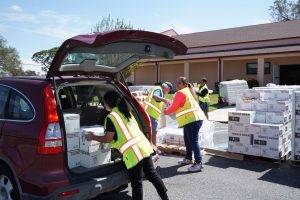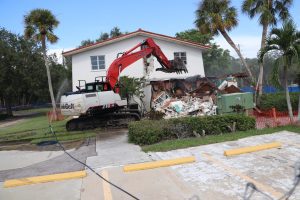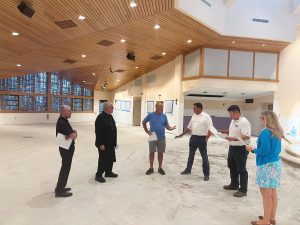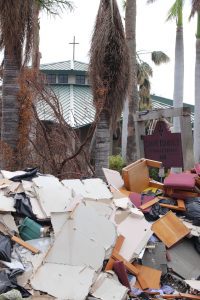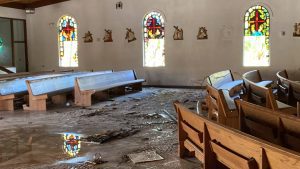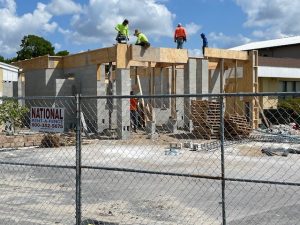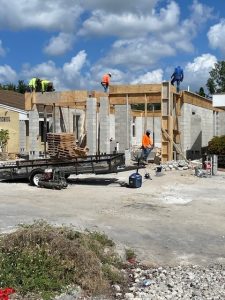Bishop Frank J. Dewane presided over a groundbreaking ceremony for Phase 2 of St. Peter Claver Place affordable housing on Oct. 23, 2025. St. Peter Claver Place affordable housing community in Fort Myers is expanding with an additional 72 units on Sister Bowman Lane.
These units are being constructed to add to the existing 136-units which were developed by the Diocese of Venice and opened Phase 1 in April 2024.
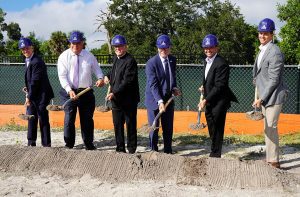 The Diocese of Venice partnered on the project with National Development of America, Inc. (NDA), and was supported by the City of Fort Myers, the Fort Myers Community Redevelopment Agency, a Community Development Block Grant Disaster Recovery administered by Lee County, and the Florida Housing Finance Corporation. Officials from these agencies attended the groundbreaking ceremony.
The Diocese of Venice partnered on the project with National Development of America, Inc. (NDA), and was supported by the City of Fort Myers, the Fort Myers Community Redevelopment Agency, a Community Development Block Grant Disaster Recovery administered by Lee County, and the Florida Housing Finance Corporation. Officials from these agencies attended the groundbreaking ceremony.
During the blessing and groundbreaking ceremony, Bishop Dewane thanked each of the officials present and NDA for their support in getting the much-needed expansion built.
“The Diocese is trying to make a difference here,” Bishop Dewane said. “Housing is an important issue throughout Fort Myers and other communities. If a family does not have housing, it is going to be a difficult struggle for them.”
As part of the blessing, Bishop Dewane added, “The work we do here will continue to build up the Lord’s Kingdom. May the Lord bless all who will occupy this housing.”
Kevin Anderson, Mayor of Fort Myers, thanked Bishop Dewane and Diocese of Venice for having the vision to use its property for the benefit of needy families in Fort Myers.
“Phase 1 showed us what’s possible when collaboration meets purpose,” Anderson said. “It offered safe affordable homes and a renewed sense of pride and belonging. With Phase 2, we are not just expanding homes, we are extending opportunities of stability and a promise for a better tomorrow for more families here in Fort Myers.”
Cecil Pendergast, Lee County Commissioner, echoed Anderson’s praise and explained how the financing was expedited through a $17.2 million Community Development Block Grant – Disaster Relief, which was facilitated by the Lee County Board of Commissioners following Hurricane Ian in 2022.
“This project is part of a shared commitment for long-term affordable housing in the historic Dunbar community,” Pendergast said. “It is changing people’s lives and making a difference.”
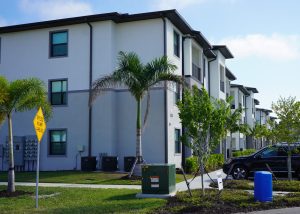 Although the project faced numerous delays and massive price increases since its first proposal in 2016, National Development’s Rick Miller said the time and effort has been worth every moment.
Although the project faced numerous delays and massive price increases since its first proposal in 2016, National Development’s Rick Miller said the time and effort has been worth every moment.
“More than 300 live in Phase 1 of St. Peter Claver Place,” Miller said. “Not everyone can afford decent housing. But these apartments are offered at prices families can actually afford. That is the most rewarding part of this.”
The apartments are two- and three-bedroom units, built to hurricane standards and complete with new appliances. There is an on-site playground and clubhouse. An added amenity is the proximity to Catholic Charities Children’s Center. This program, on the adjacent property, offers after-school care and tutoring, as well as summer programs for children and teens.
Monthly rent ranges from $630 to $1,300, less than half the market rate. Construction has already begun on Phase 2, with work expected to be completed in about eight months.
St. Peter Claver Place is just the latest joint-project between the Diocese and NDA. Previously, they worked together to build Casa San Juan Bosco I & II, consisting of 97 duplex homes used for farmworker housing in Arcadia, and later the adjacent St. John Paul II Villas, a 64-unit senior housing complex. Other projects include Casa San Alfonso, an affordable housing community in Zolfo Springs, and San Pedro at Meadow Park affordable housing in Arcadia. Additional affordable housing projects are currently in development for Bowling Green and Immokalee.
In addition, the Diocese has built several low-income elderly housing communities in Sarasota (2), Fort Myers (4), Port Charlotte (2), and Palmetto (2), as well as creating the Family Haven transitional emergency housing for individuals or families in need in partnership with Catholic Charities Diocese of Venice in North Port and Englewood, as well as Our Mother’s House, a transitional living program for mom’s with young children.
St. Peter Claver Place Phase 2 units will be available for rent in the spring of 2026. People can apply Jan. 1, 2026. For leasing information for St. Peter Claver Place, please call 239-288-0928 or email stpeter@ndcassetmanagement.com.





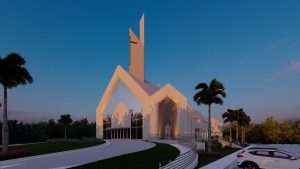
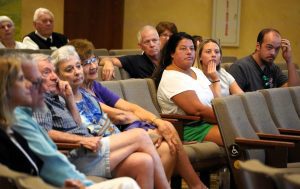
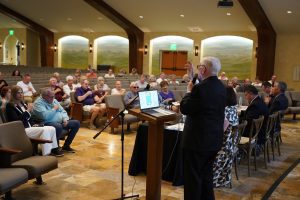
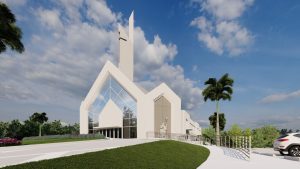
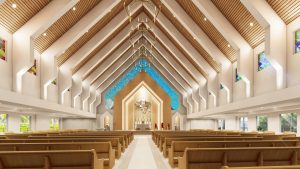
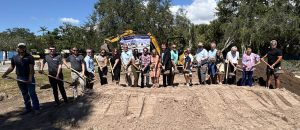
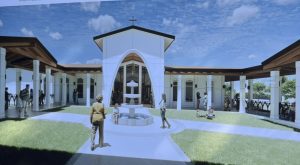
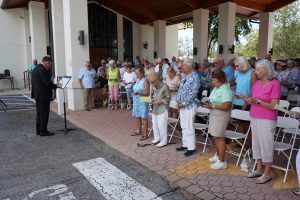
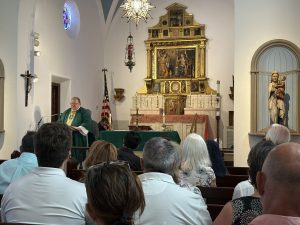
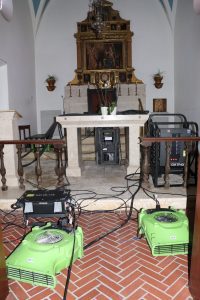
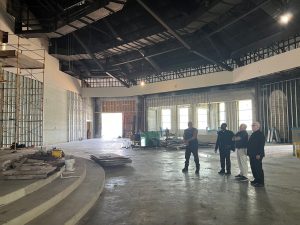
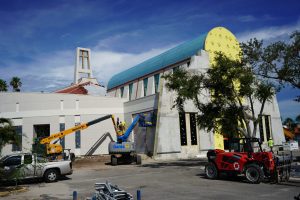

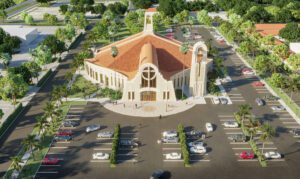
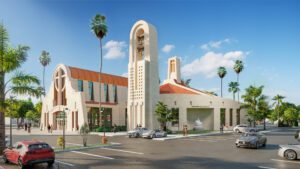
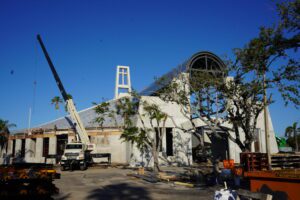


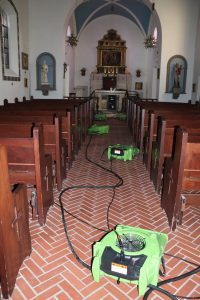
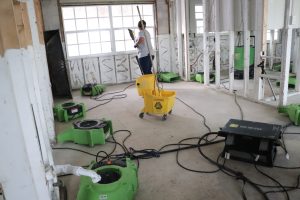 In addition, Milton’s water reached the rectory. While the water did not reach the flooring, it did damage the garage and crawlspace where various utilities were located.
In addition, Milton’s water reached the rectory. While the water did not reach the flooring, it did damage the garage and crawlspace where various utilities were located.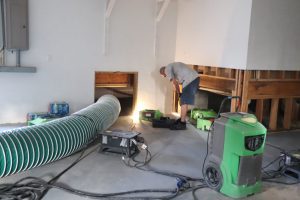 Working under the direction of staff from the Diocese of Venice Buildings and Construction Office, contractors have removed all the debris from the church, preschool and rectory as part of the mitigation work. How best to proceed with the reconstruction of each building will be determined in the coming days and weeks.
Working under the direction of staff from the Diocese of Venice Buildings and Construction Office, contractors have removed all the debris from the church, preschool and rectory as part of the mitigation work. How best to proceed with the reconstruction of each building will be determined in the coming days and weeks.